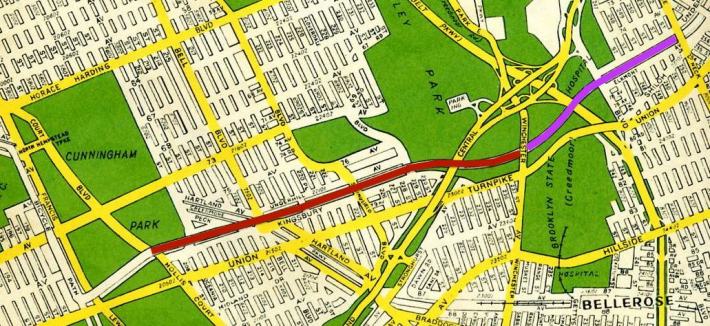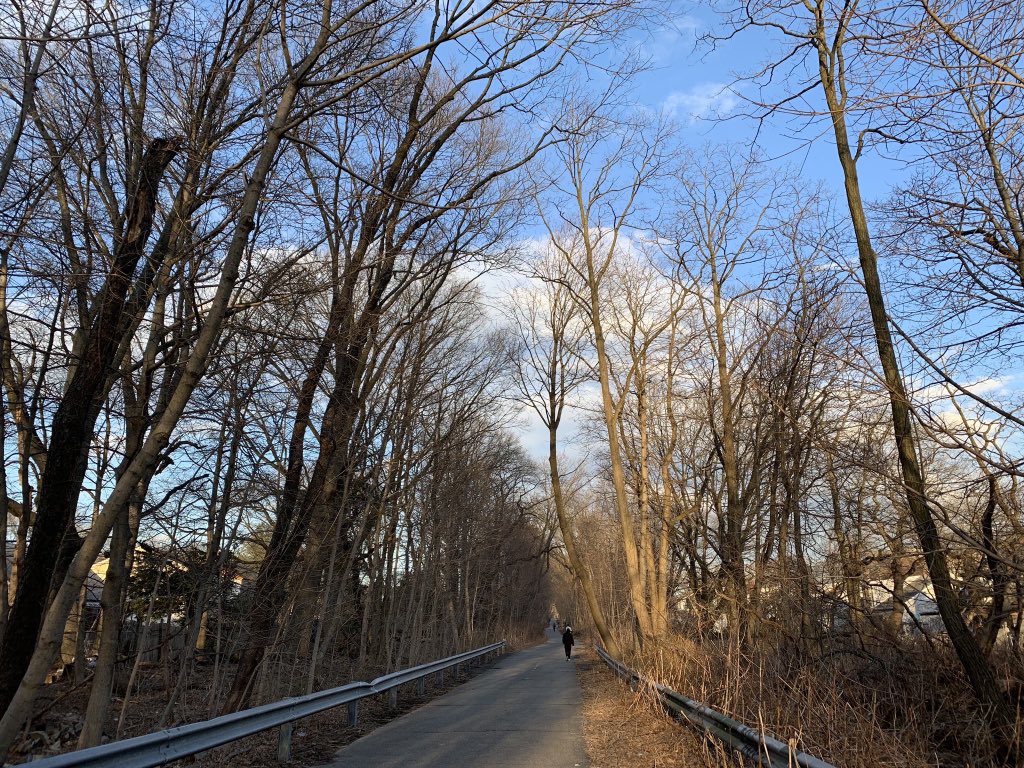Queens cyclists and pedestrians are closer to getting more control over a car highway in that was built in the early days of the automobile.
State lawmakers on Tuesday passed a bill to study the expansion of the Motor Parkway Greenway — a safe bike and walking route in eastern Queens that runs parallel to the notoriously dangerous Union Turnpike. Currently, only a short stretch of the William Kissam Vanderbilt II-built roadway — from Cunningham Park to Winchester Boulevard — has been converted into a bike and pedestrian greenway. The bill directs the state to study converting the remaining stretch to the Nassau County border for recreational use.
The six-year fight for the bill was led by Joby Jacob, a member of Transportation Alternatives’ Eastern Queens committee, but dozens of advocates joined the battle, making its passage a major win for the Queens community and safe-street activists.
“I don’t think I’ve received more comments and requests from the public on this bill than any other this year. So many people in Queens are really excited about this,” said Queens Assembly Member Catherine Nolan during the vote on Tuesday.
Relive the historical win for the @MotorPkwyEast pic.twitter.com/fV0wUWlYIZ
— Daniel A Solow (@Daniel_A_Solow) June 18, 2019
The bill, sponsored by Queens Assembly Member David Weprin and Queens Senator John Liu, gives the state Department of Transportation the green light to study the much-need expansion of the greenway, which is a part of the crucial Brooklyn-Queens Greenway that links Bayside with Coney Island through a biking and pedestrian path. But the route is not contiguous, so users must trek along dangerous roads to get to some sections.

Jacob applauded the bill's passage up in Albany and said it's the work of a lot of people who desperately wanted to see the historic route revived and increase connectivity for cyclists and pedestrians.
“This is obviously the fruits of not just my labor, but many other people as well," he said. "The aspect of restoring the bike path is a historical reclamation of a space that used to be there but also was a connectivity issue — there's this missing link."
Good news for @MotorPkwyEast — tireless advocacy pays off! #thepeopleswork #queensgreenway pic.twitter.com/ohgOc4Sga0
— Nily Rozic 李羅莎 (@nily) June 18, 2019
The Motor Parkway was originally built by Vanderbilt in the early 20th century — the first privately built highway for the newfangled automobile. But it was abandoned about 30 years later when the parallel Grand Central and Northern State parkways opened. In 2002, a section of the parkway opened as a bike and pedestrian path.
The state must release the results of the study, which includes a cost estimate, duration, impact of construction, environmental impact, and if it's feasible to connect the extended trail with the Empire State Trail, by next year, according to the bill. The legislation now awaits Gov. Cuomo's signature.






